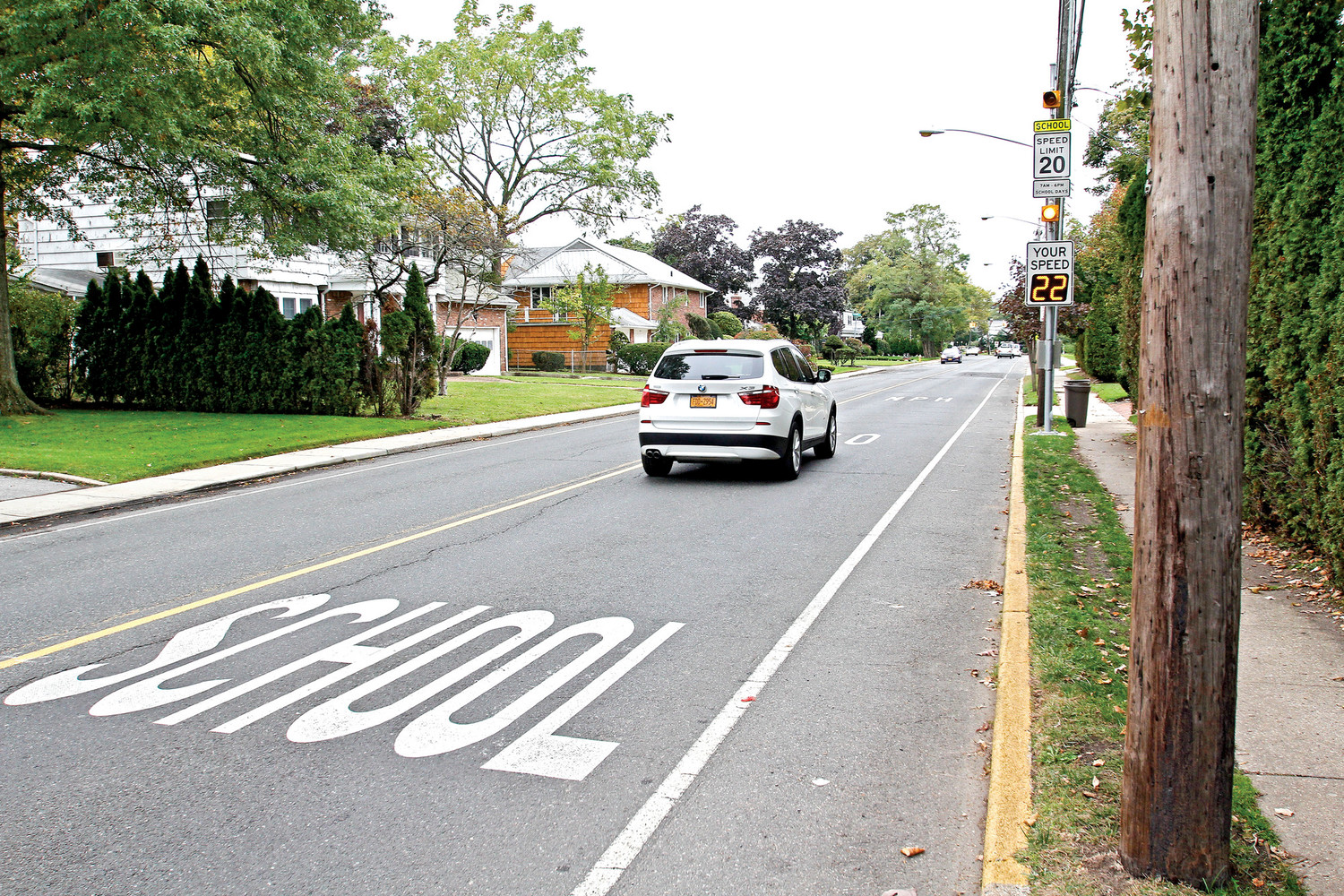Are speed cameras needed in Rockville Centre?
Residents, officials weigh in after county executive says she would support measure around schools that want them
While many Rockville Centre residents do not support speed cameras near schools, some believe they could improve safety for students their and parents.
County Executive Laura Curran proposed an opt-in program for speed cameras near schools last month, shortly after Gov. Andrew Cuomo signed an executive order restoring New York City’s school-zone speed camera program, which expired due to inaction from state lawmakers.
Rockville Centre Schools Superintendent Dr. William Johnson said the district received a letter from the county about opting in, but officials are waiting for more information before responding.
Such an opt-in proposal would require the approval of state and county lawmakers. Curran does not have a formal plan to bring back speed cameras, according to spokeswoman Karen Contino, but would support districts who want them in school zones.
"The County Executive is simply reaching out to Nassau County’s 54 school districts to discern each district’s individual interest in having photo enforcement cameras near their buildings," Contino wrote to the Herald in an email.
“Do we select the sites? Do they select the sites?” Johnson said. “I’m no expert on where these cameras should be located.”
The county had a short-lived school speed camera program in 2014, which was riddled with problems. There were no warnings of where the cameras were, and hundreds of drivers going 10 or more miles per hour above the school-day speed limit were issued $80 tickets at times when school was not in session, including some before the start of the school year.
It was announced in October 2014 that a speed camera would be set up in front of Jennie E. Hewitt Elementary School, at DeMott and Hempstead avenues, the Herald reported that year. The decision was made with some input from the village Police Department, but none from the school district, school officials said at the time.
The County Legislature unanimously voted to end the program, which generated about $30 million in revenue, in December 2014.
Rockville Centre Police Commissioner James Vafeades said the county has not contacted the department regarding potential spots for the speed cameras if the village opted in. He said that although the department monitors all of the school zones carefully, speeding is more prevalent on roads such as Hempstead and Lakeview avenues, near Hewitt, as well as near Floyd B. Watson Elementary School and South Side Middle School.
“I know they’re not popular,” Vafeades said of the cameras. “. . . It does appear that they do work and that people do slow down because of it.” Nassau County police said they did not have data for tickets issued by speed cameras in Rockville Centre.
In 2018, there have been five car accidents near Watson, four near Hewitt, one near Francis F. Wilson Elementary and one near South Side High School, Vafeades said. Rockville Centre police do not have data for the area around William S. Covert Elementary School, which is outside its jurisdiction in South Hempstead.
Residents took to social media to share their opinions on the potential return of speed cameras, which caused county-wide backlash four years ago. “People will be looking for the cameras instead of the kids,” Andrew Toulas wrote to the Herald on Facebook, adding that Rockville Centre police could give out tickets instead if speeding is an issue. “I would rather folks concentrate on the road.”
Others called the proposal a “money grab” for the county.
But Kristina Seidenstein, who lives a block away from Hewitt Elementary School, told the Herald that she is in favor of installing cameras. She called it “nothing short of a miracle” that no one has been killed at the intersection of DeMott and Hempstead avenues, adding that nobody abides by the speed limit of 20 mph.
“The safety of the children is paramount,” Seidenstein wrote to the Herald in an email. “The speeding, reckless driving, passing of school buses and running lights is a constant, even with lots of children present. I think if the cameras help this extremely dangerous problem, and can potentially save a life, they should absolutely be brought back. The drivers committing these offenses more than deserve the tickets they get.”
Minority Leader Kevan Abrahams, a Freeport Democrat, said that while he thinks the proposal deserves consideration, he needs more information before committing to a vote. Specifically, he said, he wants to know how school districts would opt into the program. “Is this something that could happen administratively, or is this something where the public could have open comment on?” he asked, adding that he supports community input.
State Assemblyman Brian Curran, a Republican from Lynbrook, said he was mostly against the idea, and called it a disguised revenue enhancer. “I’m all for whatever we have to do around school to make sure our schoolchildren are safe,” he said, “but a system of speed cameras, I believe, exists only to enhance the revenue for the county.”
The schools currently have crossing guards employed by the village, but safety can always be improved, Johnson said. He added that he would like to see evidence that speed cameras work and a recommendation of where they may be needed most, but said they should be considered.
“I would support anything that would manage and control traffic around our buildings,” Johnson said, “. . . but I don’t know exactly what that is.”

 44.0°,
Mostly Cloudy
44.0°,
Mostly Cloudy 




